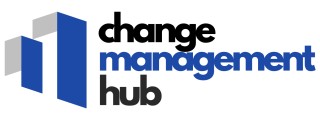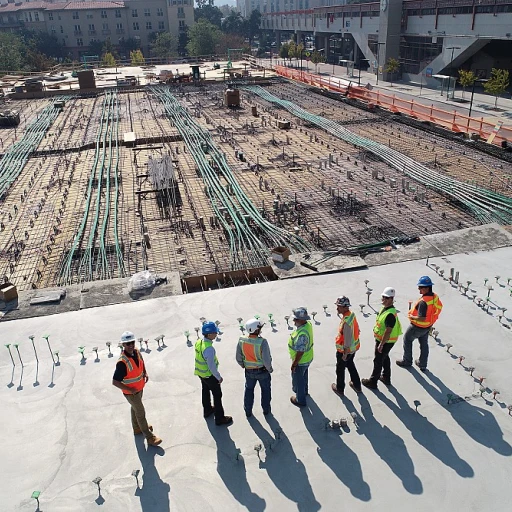-large-teaser.webp)
Understanding Change Management
Defining Change Management
Change management is an organizational practice that involves ensuring a smooth transition from one state to another within a company. The core purpose is to handle transitions efficiently, minimize disruption, and retain the desired business outcomes during periods of change. Whether it's an alteration in processes, systems, or company culture, the aim is to implement change effectively.Delving into the origins, many principles of modern change management have roots in lean methodologies, such as the Toyota Production System. It highlights the importance of understanding pull and push systems in manufacturing, allowing organizations to adapt to customer demand without excessive inventory buildup. Change management takes cues from this by emphasizing lean strategies to reduce waste and improve processes.
Adopting a "pull flow" approach, just like the kanban system, can help businesses in strategizing better inventory control and production scheduling. By using kanban cards, teams can visualize workflows, manage lead time, and adapt to the takt time of customer demand. The alignment of these industrial practices into change management ensures companies do not merely adjust for the sake of change but do so efficiently, keeping productivity and team morale intact.
Successful change management relies heavily on efficient communication and understanding roles within a project. It's vital to comprehend the distinct roles and responsibilities of everyone involved. For an in-depth exploration on how roles like a product owner differ from a business analyst, visit the understanding of these roles. Such clarity helps in better execution and reduces friction during the change process.
In conclusion, understanding the fundamentals of change management isn’t merely about facilitating transitions. It's about strategically planning and executing those changes with an eye on how they affect people, processes, and tools. This foundational knowledge serves as the backbone for more advanced tactics, such as knowing when adaptability is needed and when taking definitive action is crucial.
The Art of Adaptability
Mastering the Dance of Adaptability
In navigating the ever-evolving landscape of change management, adaptability becomes a crucial factor for success. The ability to adjust processes, plans, and mindsets according to new inputs and unforeseen challenges plays a significant role in ensuring that a project meets its intended goals. Developing your adaptive thinking skills is vital in this context and can make the difference between thriving amidst transformation or falling behind.
Consider the duality of push and pull systems within a production environment, such as those employed by Toyota's lean manufacturing principles. The push system centers on producing goods based on projected demand, which can lead to excess inventory and inefficiencies. In contrast, a pull system aligns production with actual customer demand, reducing waste and lead time while improving flow. These methodologies offer insights into how adaptability can be embedded within organizational processes.
Finding the Right Balance with Systems
Production systems, like Toyota's, exemplify how adaptability is applied in real-world settings. The use of kanban systems or cards to manage workflow and signal when inventory is needed allows for real-time adjustments to production rates, aligning closely with customer demand. Such strategies in pull flow and piece flow underscore the imperative of adaptability. It is about having a system flexible enough to respond to changes while maintaining control over order and supply chain performance.
The kanban card system is an illustration of this balance in action, where the limitation of work in progress through time supply and takt time adjustments can effectively manage and reduce bottlenecks. Regular inspection and short feedback loops provide opportunities for timely interventions and problem solving, highlighting areas where system improvements can occur, and better alignment with market needs can be achieved.
Incorporating adaptive techniques into change management processes does not solely focus on production systems but extends to team dynamics and leadership approaches. Adaptability embraces the ebb and flow of change, allowing for more fluid, effective management of resources and people, ultimately resulting in enhanced pull and push efficiency. This raises the need for continual assessment and refinement of systems, ensuring they remain effective in the face of new challenges and growing demands.
Knowing When to Take Charge
Recognizing the Right Moments to Lead
In the realm of change management, knowing when to take charge is as crucial as being adaptable. While flexibility allows for the natural flow of ideas and solutions, there are moments when decisive leadership is necessary to steer the course effectively. This balance is essential to ensure that the change process remains aligned with organizational goals and customer demand.
One of the key concepts in determining when to lead is understanding the dynamics of push and pull systems. In a pull system, production is driven by actual demand rather than forecasts, reducing waste and improving efficiency. However, there are times when a push system, where production is based on predicted demand, is needed to meet specific strategic objectives or to manage inventory effectively.
For instance, the Toyota Production System is renowned for its use of kanban systems to manage workflow and inventory. Kanban cards signal when parts are needed, ensuring a smooth piece flow and minimizing lead time. However, when problems arise, such as supply chain disruptions or unexpected spikes in customer demand, leaders must step in to direct the flow and make necessary adjustments to the production system.
Effective change management involves recognizing these critical moments and having the confidence to take charge. This may involve implementing process improvements, engaging in problem solving, or adjusting takt time to ensure that production aligns with organizational goals. By understanding when to lead and when to let the system flow naturally, leaders can optimize their strategies and reduce waste.
Ultimately, the ability to discern when to adapt and when to direct is a skill that can be developed through experience and continuous learning. By embracing both flexibility and control, organizations can navigate the complexities of change management with greater success.
Balancing Flexibility and Control
Finding the Right Balance with Flexible Control
In the landscape of change management, success lies not only in adaptability but also in understanding when control is necessary. It's a fine line to tread, requiring a blend of flexibility and direct action. Organizations often grapple with determining when to employ a more flexible "pull flow" approach and when to exercise a firm "push system" for managing change. The concept of "pull systems," derived from the renowned Toyota production system, emphasizes responding to customer demand by allowing production to be driven by actual need. This can be an effective way to reduce waste and adapt swiftly to varying demands. Utilizing lean methodologies can help organizations avoid unnecessary inventory by producing parts only when needed, thereby ensuring a smooth piece flow in response to real-time customer demand. However, there are instances when a push system is required to maintain order and structure. This is especially true in environments with less predictable demand fluctuations, where the lead time and supply chain stability need reinforcing through a more direct approach. In such scenarios, setting clear priorities and establishing a firm takt time can help keep production systems aligned and efficient. Decision-making in change management is enhanced by leveraging tools like Kanban systems and kanban cards which provide visual clarity on workflow and inventory levels. These tools aid in maintaining transparency and flow within pull and push paradigms, allowing teams to spot problems early and engage in proactive problem solving. Ultimately, the key is understanding that both flexibility and control are vital, and the real skill lies in determining which to employ when. By mastering these elements, organizations can both meet immediate needs and lay the groundwork for sustainable growth and continuous process improvement.Tools and Techniques for Effective Change Management
Practical Tools for Driving Change
Implementing effective change management strategies requires robust tools and techniques. The balance between flexibility and control often hinges on specific systems and approaches that help organizations navigate change. Consider the pull and push systems as foundational concepts. In a pull system, work is driven by customer demand, minimizing excess inventory and reducing waste, while a push system initiates work based on predicted demand, which can sometimes lead to overproduction. Both systems have their places in change management, particularly when striving for adaptable production systems. The kanban system exemplifies a pull system, where work is managed using signals. Kanban cards facilitate a seamless flow by highlighting what needs to be done and when. This not only optimizes lead time and takt time but also ensures an efficient pull flow aligned with customer demand. Such systems are integral to the toyota production system’s success and serve as benchmarks for effective change. Lean principles, emphasizing reduced waste and efficient flow, play a pivotal role in process improvement. Applying these principles can help identify where change is needed and how to implement it efficiently. Problems arise, but with a structured approach towards problem solving, organizations can foster a culture of continuous improvement. Technology also supports change management. Automated systems can streamline production, while project management tools ensure that all parts of the change process are visible and well-coordinated. Moreover, time tracking tools and inventory management software can aid in aligning production with actual demand, thus improving the entire supply chain. Ultimately, the key lies in understanding which tools and techniques best fit your organization's specific circumstances and objectives. While no single system will work for every scenario, drawing insights from proven methodologies like the kanban and lean systems can set the stage for successful change management initiatives. As you embark on this journey, remember that each organization's needs are unique, and flexibility will remain crucial in this evolving landscape. Implementing the right mix of systems and techniques can empower people to adapt to change efficiently and effectively.Case Studies: Success and Lessons Learned
Real-World Success: Learning from Experience
The success of change management strategies often relies on drawing insights from real-world applications. By learning from various implementations, organizations can better tailor their approaches to meet specific needs. Toyota's Kanban RevolutionToyota's pioneering use of the Kanban system highlights the effectiveness of lean techniques to enhance production systems. The company’s focus on ‘pull’ rather than ‘push’ systems revolutionized how inventory and production could be streamlined. By responding to specific customer demand, this method reduced waste significantly and optimized the piece flow, adjusting to takt time and lead time effectively. By integrating Kanban cards into their system, Toyota could regulate flow and monitor where inventory bottlenecks could occur. Adapting to Evolving Demands
Other businesses have mirrored Toyota’s success by adopting lean and Kanban principles to address their unique challenges. For example, implementing a pull system reduced unnecessary inventory and emphasized process improvement. This was essential in environments where quick adaptability to customer needs was crucial. Such strategies often align systems with the principles of pull flow to ensure that only what is needed is produced, reducing excess and boosting efficiency. Balancing Push and Pull
Understanding when to apply a pull flow as opposed to a push system is crucial in maintaining a balanced production system. Some organizations have found success through a hybrid push-pull strategy, especially where variable demand makes strict adherence to just one approach untenable. Balancing these elements ensured systems remained flexible yet controlled, addressing problems as they emerged while meeting both immediate and long-term goals. Continuous Improvement and Problem Solving
In each successful case, the cornerstone of effective change management has been ongoing problem-solving and continuous improvement. By instilling a culture that values regular assessment and adjustment, companies have managed to enhance their systems uniformly. This not only aligns with the broader principles of lean manufacturing but also ensures that time supply and demand remain in optimal balance, supporting an efficient supply chain overall.













